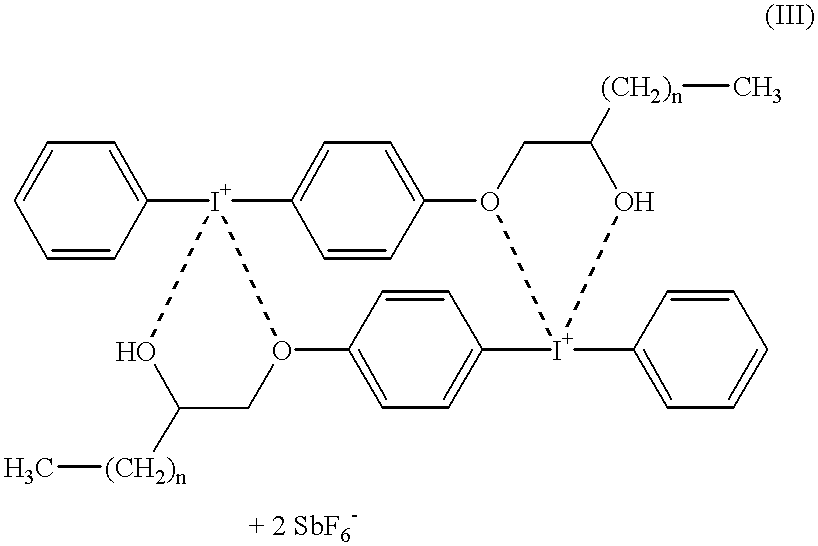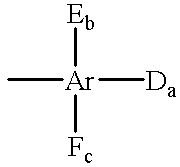Iodonium salt photoinitiators containing urethane groups for cationic curing
a technology of iodonium salt and urethane group, which is applied in the field of hydroxylbearing iodonium salts, can solve the problems of poor irradiation effect of coating, adverse effect of high crystallization tendency, and limited solubility of photoinitiators, so as to improve the compatibility with organopolysiloxanes and reduce the crystallization tendency. , the effect of increasing the hydrolytic stability
- Summary
- Abstract
- Description
- Claims
- Application Information
AI Technical Summary
Benefits of technology
Problems solved by technology
Method used
Image
Examples
working examples
Example 1
10 g of a commercial photoinitiator of the formula (XI) were suspended in 10 ml of ethyl acetate, mixed with 1.0 g of ethyl isocyanate and two drops of COSMOS.RTM. 29* as catalyst, and heated at 60.degree. C. in a waterbath. The mixture was stirred for 2 h. After the reaction, the solvent was removed by distillation. This left a yellow, viscous product. *Commercial product of Goldschmidt AG
example 2
10 g of a commercial photoinitiator of the formula (XI) were suspended in 10 ml of ethyl acetate, mixed with 1.7 g of hexyl isocyanate and two drops of COSMOS.RTM. 29 as catalyst, and heated at 60.degree. C. in a waterbath. The mixture was stirred for 2 h. After the reaction, the solvent was removed by distillation. This left a yellow, viscous product.
example 3
10 g of a commercial photoinitiator of the formula (XI) was suspended in 10 ml of ethyl acetate, mixed with 1.6 g of phenyl isocyanate and two drops of COSMOS.RTM. 29 as catalyst, and heated at 60.degree. C. in a waterbath. The mixture was stirred for 2 h. After the reaction, the solvent was removed by distillation. This left a yellow, viscous product.
PUM
| Property | Measurement | Unit |
|---|---|---|
| melting point | aaaaa | aaaaa |
| speed | aaaaa | aaaaa |
| polarity | aaaaa | aaaaa |
Abstract
Description
Claims
Application Information
 Login to View More
Login to View More - R&D
- Intellectual Property
- Life Sciences
- Materials
- Tech Scout
- Unparalleled Data Quality
- Higher Quality Content
- 60% Fewer Hallucinations
Browse by: Latest US Patents, China's latest patents, Technical Efficacy Thesaurus, Application Domain, Technology Topic, Popular Technical Reports.
© 2025 PatSnap. All rights reserved.Legal|Privacy policy|Modern Slavery Act Transparency Statement|Sitemap|About US| Contact US: help@patsnap.com



